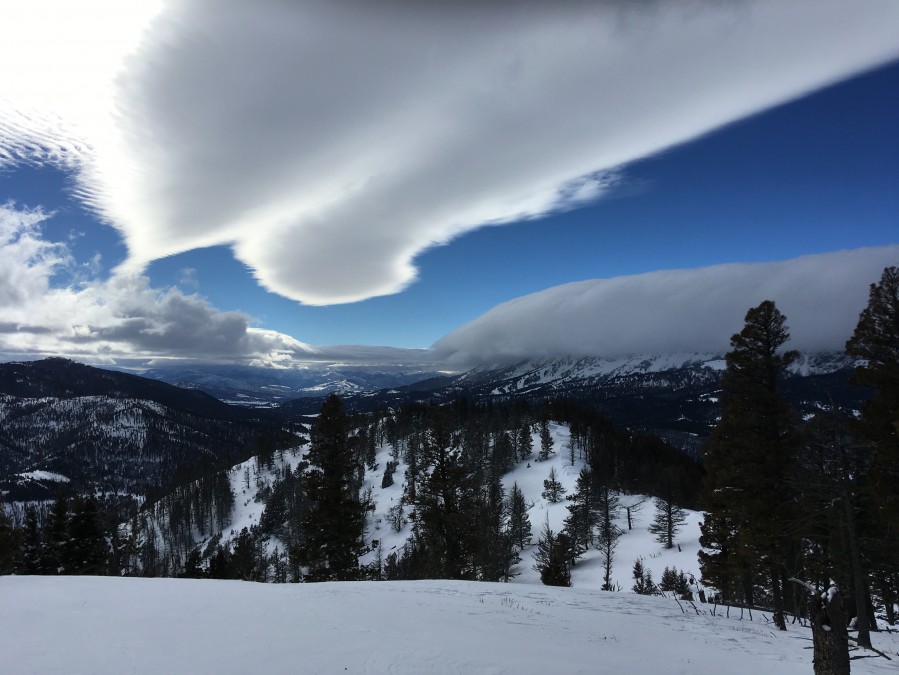
At over 3 million acres, the Custer Gallatin National Forest is an integral part of the vast Greater Yellowstone Ecosystem, the most intact temperate ecosystem remaining in the northern hemisphere. It provides unparalleled habitat for grizzly bears, wolves, bison, elk, lynx, and wolverines among many other species. It is adjacent to Yellowstone National Park allowing animals to migrate north, something that will only become more important with climate change. The Gallatin Range is the only mountain range originating in Yellowstone National Park that does not have permanent protection.
Gallatin county is rapidly changing; it is the fastest growing county of its size in the US. More people, means increased recreational uses of the land. The management of this forest needs to adapt to the increasing pressures placed on it. Right now, the Forest Service is accepting comments on its draft plan for the Custer Gallatin. This is our best opportunity to impact how this forest will be managed for decades to come!
The Sierra Club has developed a proposal that recommends significantly more wilderness than most of the alternatives in the draft plan. It balances already established recreation uses with the need to preserve habitat and enable connectivity across the landscape. We believe this is the best way forward to ensure the health of the Greater Yellowstone Ecosystem and maintain recreation opportunities for the community.
Join us to send comments to the Forest Service advocating for wilderness, wild rivers and connectivity for wildlife! These comments will be taken into consideration when making the final decisions on how this forest should be managed.
Big Picture Goals for the Custer Gallatin:
-
Manage the Custer Gallatin with the future in mind, anticipating that climate change and population growth will significantly impact this ecosystem.
-
Ensure connectivity for wildlife across the landscape.
-
Work with state and private landowners and highway planners to facilitate wildlife movement along known travel corridors.
-
Recommend wilderness for a significant portion of the Custer Gallatin
-
Have the value of our public lands be placed in wildness rather than in timber or mineral wealth
Recommendations for Specific Areas within the Custer Gallatin
Bridgers and Bangtail Ranges
-
Two roadless areas around Blacktail and North Cottonwood in the Northern Bridgers should be recommended for wilderness
-
A Recreation Area should be established in the southern Bridgers to help maintain connectivity to the northern portion of the range.
-
Total recommended wilderness 19,160 acres.
Crazies
-
The Forest Plan should establish the long-term goal of consolidating land ownership in the Crazies, through the federal acquisition of private checkerboard land.
-
Three roadless areas within the Crazies are suitable for wilderness recommendation.
-
Total recommended wilderness 43,500 acres.
Gallatin Range
-
Recommend significantly more of the roadless areas in the Gallatin Range for wilderness, including exceptional wildlife habitat in the Porcupine-Buffalo Horn area, South Cottonwood, Hidden Lakes, and West Pine.
-
The majority of the Porcupine Buffalo Horn WSA should be recommended as wilderness excluding the land to the southwest of the Big Sky Snowmobile Trail.
-
A Recreation Area should be established in Hyalite to ensure quality recreation opportunities for future generations.
-
Total recommended wilderness 164,500 acres.
Madison Range
-
Area adjacent to the south of the Taylor Hilgard Wilderness Unit should be recommended for wilderness designation
-
Cowboy’s Heaven and the Lionhead should be recommended for wilderness designation
-
Total recommended wilderness 55,620 acres.
Absaroka-Beartooth Ranges
-
Line Creek, West Fork/Lake Fork of Rock Creek, Mill Creek, East Rosebud, and Main Fork Rock Creek in areas adjacent to existing wilderness should be recommended for wilderness designation
-
Total recommended wilderness 148,940 acres.
Pryor Range
-
Large portions of the Pryors roadless areas including Big Pryor, The Punchbowl, Lost Water Canyon, and Bear Canyon should be recommended for wilderness
-
Total recommended wilderness 47,320 acres
Recreation Areas
- Recreation areas should be established in two heavily visited areas including Hyalite Reservoir and the southern portion of the Bridgers
- These recreation areas should be created to limit motorized and mechanized recreation to trails where it is already established practice
- The creation of recreation areas can provide the framework for monitoring recreation use and better understand the impact of recreation on wildlife.